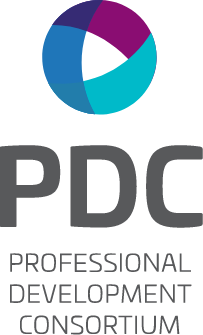You are here
Mindful Speaking
January 11, 2018
By Brian Johnson, PDC Trusted Advisor, President & Founder, Johnson & Hunter, Inc.
Invigorated by so many good presentations, I left the PDC Winter Meeting and PDI in December with my mind full of new ideas. Truly mind full. Mindful. Mindfulness. I left contemplating those words especially. I’m surprised and delighted to see that a focus on mindfulness has found a place in professional development. I have recently returned to a mindful practice myself. In doing so, I’ve hit upon a simple idea that might help others experimenting with being more mindful in this New Year.
For me the challenge of mindfulness comes down to “re-minding” myself and remembering consistently to return to specific helpful thoughts. Repetitive “re-mindfulness” is what I seek. That goal, fortunately, dovetails with a recent article in the New York Times about learning and memory titled Simple Ways to Be Better at Remembering. The takeaway from this article was a concept called “spaced repetition,” which is, of course, the essence of practicing something. Simply put, if you wish to learn something new and move that knowledge into your long-term memory, repeat the information, but space out the repetition over time.
Before describing my suggestion for using spaced repetition to develop mindfulness, let me describe my own practice of the Alexander Technique. Its creator was F. Matthias Alexander, an Australian who lived from 1869 to 1955. As a young Shakespearean actor in the late 19th century, he kept losing his voice during performances. Medical doctors advised him to rest his voice to recover, but they had no advice about how to prevent his vocal problems from recurring.
Determined to save his voice and his career, Alexander began to observe himself while speaking in a room with mirrors. His careful analysis revealed that his vocal problems resulted from unconscious habits causing excessive muscular tension in his head, neck, and torso as he spoke. His resulting Alexander Technique consists of a series of practical directions for body use. Unlike yoga or tai chi, you don’t do exercises, poses, or positions. You incorporate Alexander’s directions into your everyday activities, whether rising from your office chair or walking through an airport. These directions for better body use include:
1) Inhibit habitual responses.
2) Release your neck so your head balances forward and up.
3) Allow your shoulders to release away from your torso.
4) Allow your back to lengthen and broaden.
I was introduced to this technique while studying acting and singing in college. Turns out that I was only one degree of separation from Alexander himself. At the time, one of his first American students, Marge Barstow, was living and teaching in Lincoln, Nebraska, so I went there to study with her. Since I deliver hundreds of speeches a year, I am concerned about my vocal health, just as Alexander was. This fall I was grateful to find an excellent Alexander teacher in Santa Fe, New Mexico where I live. Now I work with her regularly.
Here’s my idea for using the proven power of spaced repetition to remind myself of Alexander’s directions. Take a blank piece of 8.5 X 11 paper and fold it in thirds as you would to slide it into a business envelope. Folding it gives you three rectangular surfaces on which to write the reminders you want to think about. On one surface I wrote legibly in large letters the words, “Head balances forward and up.” On another surface I wrote, “Allow shoulders to fall away.” On the third panel I wrote, “Back lengthens and broadens.” I then put a little tape on the open edge to create a stable three-dimensional “pup tent.” Because it’s not lying flat, it calls attention to itself as I walk past. It catches my eye, and I’m “re-minded” to follow the direction.
I rotate it periodically so a different panel is revealed. So my eyes re-encounter the reminder in surprising locations, I move it around to different surfaces. I placed it on my kitchen counter, then it was on my desk, and later I moved it to my bedroom dresser. Rotating and moving it around creates that desirable spaced repetition. This helps to move those directions into my long-term memory. Ideally, over time these directions become habitual.
The success of that experiment got me thinking about mindful speaking. If you want to improve your communication skills, this idea may help. For example, if you are working to eliminate thinking noises such as “um” or “like” between phrases, write on one panel, “Speak in phrases; think in silence,” or perhaps “SILENCE instead of like.” Even simpler, put a Post-it Note on your office phone that reminds you, “SILENCE for UM” when speaking on the phone.
If you’re striving to eliminate uptalk at the ends of phrases or sentences, draw a descending stairway icon (like you see near every stairwell). On the stair steps write the words “…with liberty and justice for all.” We all say with a falling inflection. Or on the steps write the instruction: “Walk down the steps. Period.” This reminds you to descend to a lower pitch as you end a sentence, rather than making statements sound like questions with a rising inflection. You got it? You got it.
Since it’s 2018, how about using this idea for a gentle reminder about New Year’s resolutions? I read an article about the importance of feeling GRATITUDE to help keep resolutions https://nyti.ms/2Ea35H5, so I wrote that word on one panel. I also read that INTENSITY is the secret to making my physical workouts more valuable https://nyti.ms/2E1aAjF, so I wrote that word on another. And because I’m trying to eat less after my December holiday food binge, I simply wrote LESS in very small letters in the middle of the third panel.
Here’s wishing you a Happy, Grateful, Intense and Mindful 2018!


